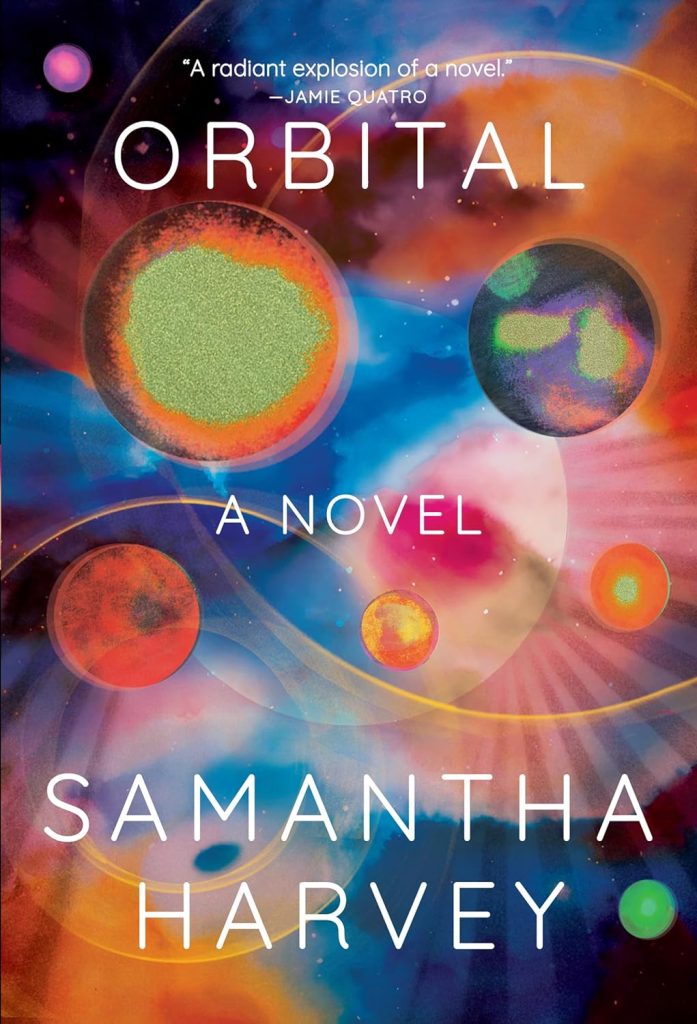Upon returning from space, many astronauts report a profound shift in perspective. Philosopher Frank White termed it the overview effect: a feeling of transcendence induced by a view of the Earth from so high up, accompanied by a sense that our planet is one interconnected system. Many describe a feeling of unity with everyone on the planet and a belief that if only they could share the feeling with others, all of humanity’s partisan divisions, inequality, and strife would melt away. Michael Collins, who piloted the command module during the Apollo 11 mission to the moon, wrote that “the view from 100,000 miles could be invaluable in getting people together to work out joint solutions, by causing them to realize that the planet we share unites us in a way far more basic and far more important than differences in skin color or religion or economic system.”
There is reason to question the truth of that statement (Jeff Bezos has been to space on one of his Blue Maxima rockets, and the experience doesn’t seem to have motivated him to improve Amazon’s notoriously bad working conditions). But perhaps we might all benefit from a little aerial perspective all the same. Except, how are we to experience something like that ourselves, hopelessly grounded as we are? The first images of the entire Earth from space did a great job providing us with perspective for a while; they served as reminders of how beautiful and precious our planet is. But the “Blue Marble” has adorned the covers of so many textbooks over the years that its potency has worn off. Today, if you want to induce awe of planet Earth or a sense of the oneness of its people, you need to turn to other methods: VR, livestreams of footage from the International Space Station’s cameras—or, all else failing, a really immersive book.

Samantha Harvey’s Orbital is a novel detailing one fictional day aboard the ISS as it circles the Earth at 28,000 km/h. At that speed, a day includes sixteen orbits, or one every ninety minutes. A fast-paced, action-packed jaunt through space this is not, though. The six astronauts aboard the Station simply wake, eat, exercise, experiment, and sleep—all the while thinking about their pasts and, of course, observing the Earth, the reason for their mission and the cause of their existence. In place of a conventional plot, Harvey offers a slow, meditative account of the minutiae of these astronauts’ lives, interspersed with occasional glimpses at the experiences of the people still on Earth.
While the story is fictional and takes place in the near future during NASA’s planned Artemis missions to the moon, the setting is so well-realized that it often reads like nonfiction. Details like the astronauts having to swallow their toothpaste or “misplacing” their limbs upon waking from their weightless sleep show the incredible depth of research that went into this book, while the lyrical prose provides a running description of the geographical features flying by outside the station. Sixteen orbits means sixteen sunrises and sunsets, yet their descriptions never grow stale. No two sunrises are ever really the same, and Harvey finds something new to comment on with every dawn, conveying the astronauts’ endless wonder at the world beneath their craft.
The characters themselves don’t quite match the prose’s richness. Over the course of the novel, we hear from characters on board the station and off, but none of them stand out. All the astronauts have very similar-sounding inner monologues despite coming from different backgrounds and possessing their own distinct, vividly rendered memories. They have similar attitudes toward their daily routines; they’re all homesick, excited for the crew of the Artemis mission, and happy where they are in equal measure. However, as evidenced by the seamless way their respective points of view bleed into each other and the frequent use of a collective third-person perspective, these commonalities are clearly intentional. They exist to stress the fact that this collection of people is a cross-section of humanity, standing in for the rest of the world, and that the differences between them don’t matter, just as the divisions between all the different factions on Earth are invented and unimportant.
For this is Harvey’s mission in Orbital: to evoke the overview effect in the reader. And while visuals like photographs or livestreams are a powerful tool to mimic the experience of seeing the Earth from orbit, they can only really capture the planet’s beauty and fragility. The literary medium can do more; it can talk about the people who inhabit this planet. So we hear from a Filipino fisherman, one astronaut’s aging mother, and the crew of the Artemis moon mission about their aspirations and fears, drawing connections between them all despite their very different lives.
One famous perspective-granting image of the Earth is the “Pale Blue Dot.” Taken by the Voyager 1 probe at a distance of 6 billion kilometres from the Sun, it’s often used to communicate the smallness of Earth, which appears in the image as a single pixel in the vast universe. This kind of dizziness at our insignificance does occasionally surface in Orbital, but it’s not the perspective the book offers overall. On the contrary—the view of Earth fills the ISS windows! The astronauts can barely see beyond it. Everything on it matters, from a child’s dream of space to a patch of pumpkins in a Japanese garden to “the Gobi Desert in seeming plainness, except in looking closer there are the fearless brushstrokes of a painter who sees in sand the movement of water…”
That’s what Orbital wants to remind us: to see all this geography, meteorology, and life as strands in an Earthly web, and to give them all their due reverence.
